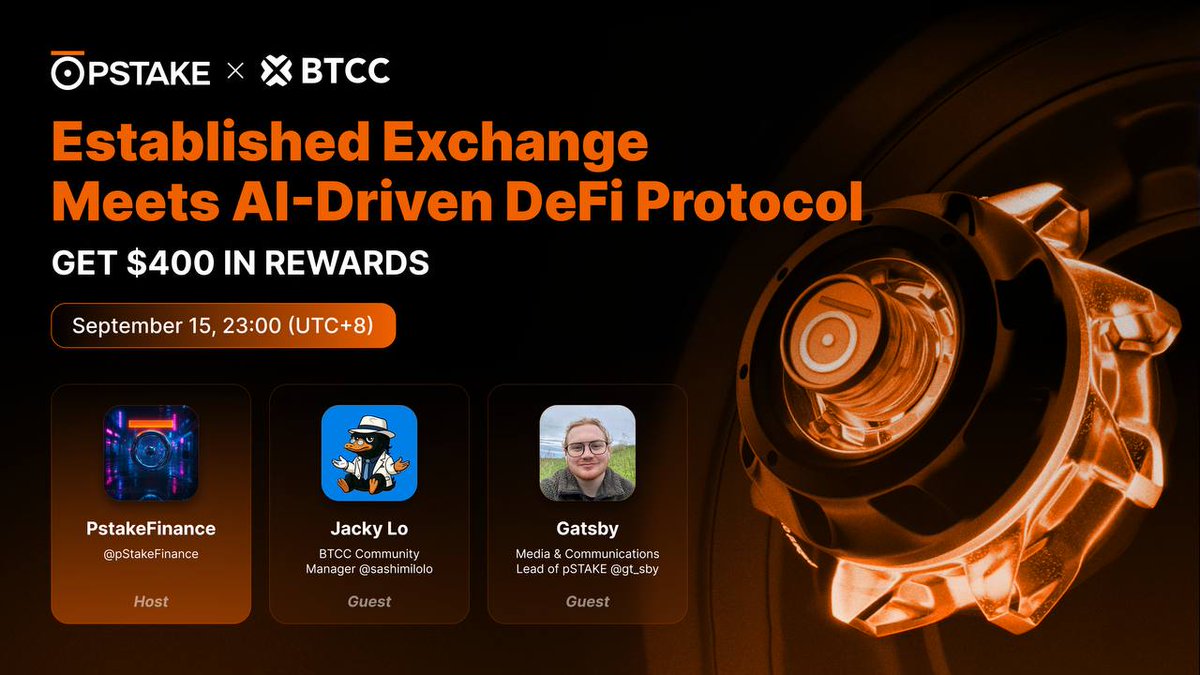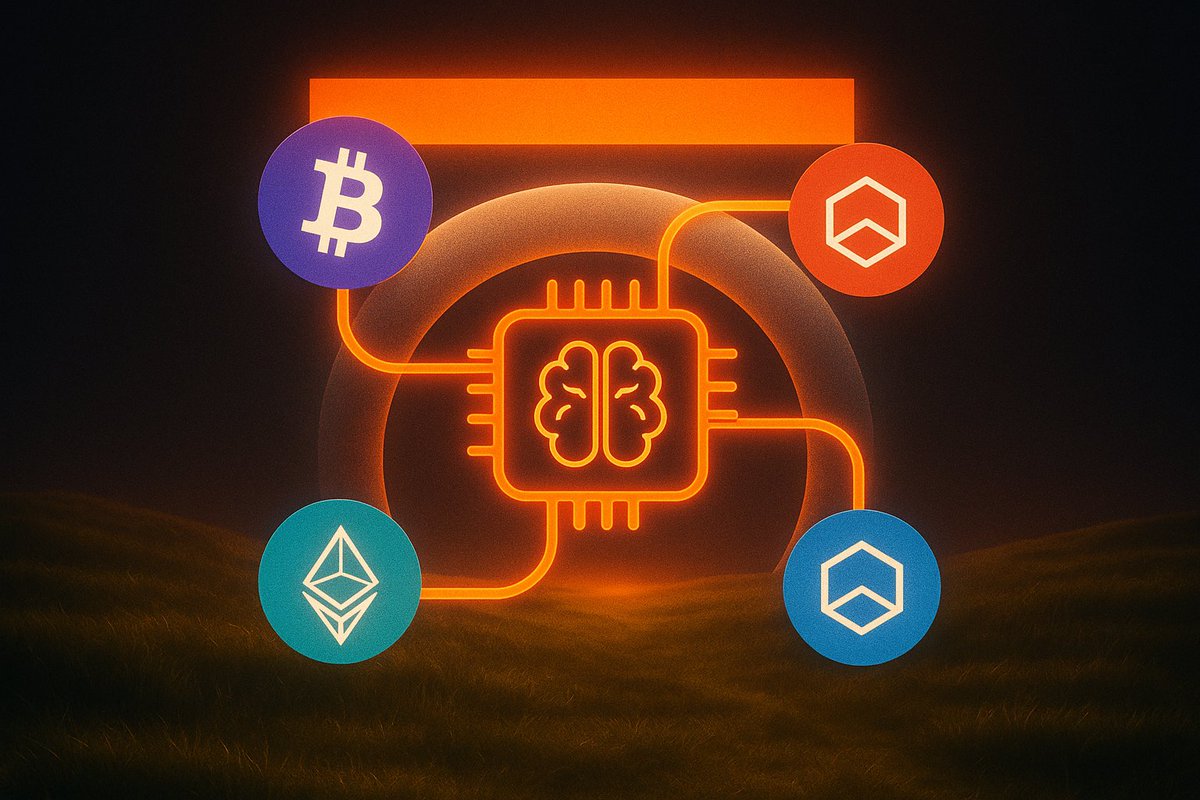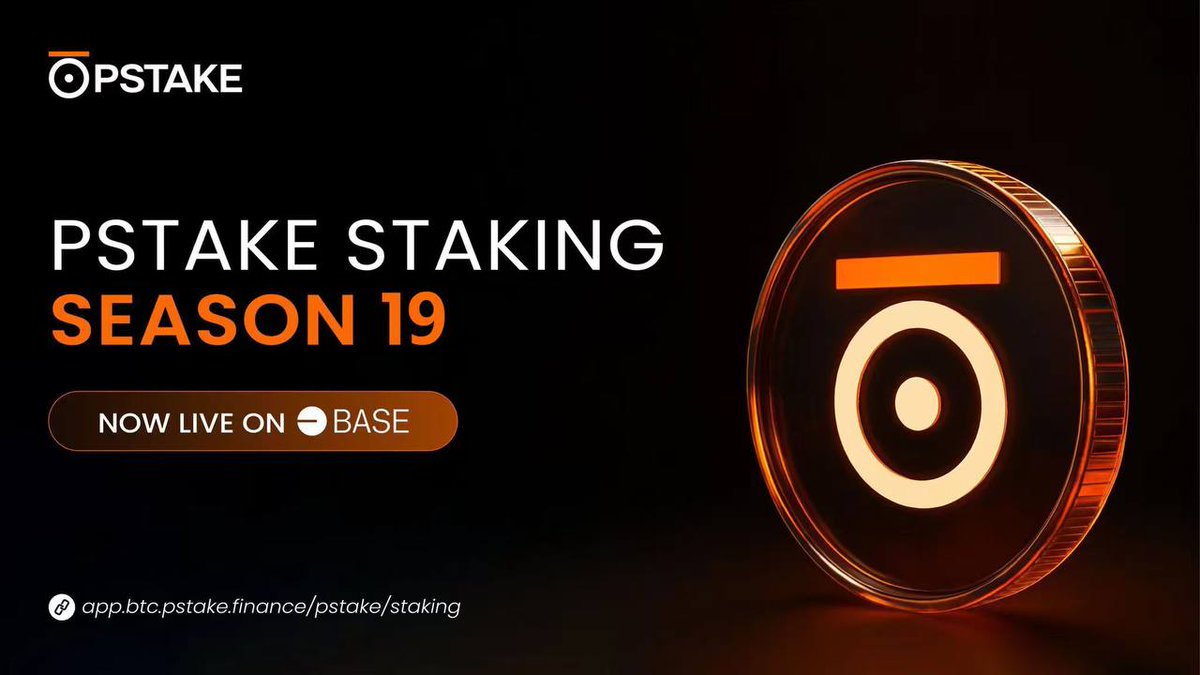Prezzo: pSTAKE Finance
in USD

Informazioni su pSTAKE Finance
Disclaimer
OKX non fornisce raccomandazioni su investimenti o asset. Devi considerare attentamente se il trading o l'holding di asset digitali è adatto a te alla luce della tua condizione finanziaria. Consulta un professionista legale/fiscale/finanziario per domande sulla tua specifica situazione. Per ulteriori dettagli, fai riferimento ai nostri Termini di utilizzo e all'Avviso di rischio. Utilizzando il sito web di terze parti ("TPW"), accetti che qualsiasi utilizzo del TPW sarà soggetto alle condizioni del TPW e disciplinato dalle stesse. Se non espressamente dichiarato per iscritto, OKX e i suoi affiliati ("OKX") non sono associati in alcun modo al proprietario o all'operatore del TPW. Accetti che OKX non è responsabile di eventuali perdite, danni e qualsiasi altra conseguenza derivanti dall'utilizzo del TPW. Tieni presente che l'uso di un TPW potrebbe comportare una perdita o una diminuzione dei tuoi asset. Il prodotto potrebbe non essere disponibile in tutte le giurisdizioni.
Prestazioni prezzo pSTAKE Finance
pSTAKE Finance sui social




Guide

Crea un conto OKX gratuito.
Finanzia il tuo conto.
Scegli la criptovaluta.
Domande frequenti relative al prezzo di pSTAKE Finance
pSTAKE Finance (PSTAKE) è un protocollo di liquid staking costruito sulla blockchain Persistence. La piattaforma consente agli utenti di mettere in staking i propri asset, comprese le monete native di diverse blockchain, in modo fluido ed efficiente.
Uno dei vantaggi principali di pSTAKE Finance è la possibilità di sbloccare il valore delle monete in staking. Gli utenti ricevono dei token secondari che rappresentano i loro asset in staking partecipando al protocollo di liquid staking della piattaforma. Questi token possono essere utilizzati liberamente in vari protocolli di finanza decentralizzata (DeFi), offrendo agli utenti ulteriori opportunità di guadagnare ricompense e massimizzare la loro utilità all'interno dell'ecosistema DeFi.
Puoi acquistare facilmente i token pSTAKE sulla piattaforma di criptovalute OKX. Le coppie di trading disponibili nell’exchange di trading spot di OKX includono PSTAKE/USDT.
Puoi scambiare le tue criptovalute, tra cui Bitcoin (BTC), Ethereum (ETH), Tether (USDT), e USD Coin (USDC), con pSTAKE senza commissioni e senza slippage di prezzo utilizzando OKX Convert.
Esplora pSTAKE Finance
pSTAKE Finance (PSTAKE) è un attore di primo piano nel settore della finanza decentralizzata (DeFi), in rapida evoluzione. Mentre le criptovalute erano tradizionalmente limitate agli investimenti a lungo termine e al trading a breve termine, l'avvento della DeFi ha introdotto un'ampia gamma di servizi bancari decentralizzati. Tra questi servizi, lo staking è emerso come una scelta popolare, attirando numerosi progetti nello spazio. pSTAKE Finance si distingue come una piattaforma di staking innovativa, che offre caratteristiche e funzionalità uniche ai suoi utenti.
Cos’è pSTAKE Finance?
pSTAKE Finance è una soluzione di liquid staking che mira a sbloccare il pieno potenziale dei token PoS fornendo liquidità per gli asset in staking. Il protocollo è progettato per estrarre il valore sottostante degli asset in staking sulle blockchain PoS.
Una delle caratteristiche uniche di pSTAKE Finance è la distribuzione delle ricompense dello staking in pTOKENS, indipendentemente dalla blockchain nativa degli asset in staking depositati. Il protocollo collabora con validatori affermati di varie blockchain L1, tra cui Stake-fish, Chorus One ed Everstake, garantendo l'affidabilità e la sicurezza del processo di staking.
Il team di pSTAKE Finance
Il team del progetto pSTAKE Finance è composto dai fondatori Tushar Aggarwal e Deepanshu Tripathi. Aggarwal ricopre anche il ruolo di CEO di Persistence, mentre Tripathi è il CTO. Inoltre, il team comprende il project lead Mikhil Pandey e l'engineering lead Kamlesh Parikarath Marar.
Funzionamento di pSTAKE Finance
pSTAKE Finance opera fornendo supporto alle reti PoS attraverso la detenzione di token pSTAKE. Gli utenti possono depositare i loro beni sulla rete pSTAKE, consentendo loro di coniarne i token derivati ERC-20 che sono agganciati 1:1 ad asset originali.
Questi token derivati possono essere utilizzati all'interno dell'ecosistema DeFi di Ethereum, consentendo agli utenti di massimizzare il loro rendimento. Inoltre, questi token derivati possono essere estesi a più reti blockchain in base a fattori quali l'utilizzo, la liquidità e altre considerazioni.
Depositando gli asset sulla piattaforma pSTAKE, gli utenti hanno il vantaggio di poter uscire immediatamente dalle loro posizioni di staking senza alcun periodo di attesa. Questa caratteristica è vantaggiosa in caso di improvvise fluttuazioni dei prezzi, consentendo agli utenti di rispondere rapidamente ai cambiamenti del mercato.
PSTAKE: il token nativo di pSTAKE Finance
PSTAKE è la criptovaluta nativa di pSTAKE Finance ed è stata lanciata a fine febbraio 2022. L'offerta totale e massima di token PSTAKE è fissata a 500 milioni. Tuttavia, è essenziale sottolineare che l'offerta circolante di token PSTAKE è di soli 44,3 milioni, pari a circa l'8,87% del totale delle criptovalute in circolazione.
Casi d’uso di PSTAKE
Il caso d'uso principale del token PSTAKE è lo staking, come suggerisce il suo nome. Inoltre, il token può essere utilizzato per fare trading, investire, prendere in prestito, prestare e fornire liquidità sugli exchange decentralizzati (DEX).
Distribuzione dei token PSTAKE
PSTAKE ha distribuito i suoi token per sostenere la crescita e lo sviluppo del progetto.
La distribuzione dei token è la seguente:
- Il 26% è destinato al fondo di sviluppo di pStake.
- Il 20% è riservato alla tesoreria della società.
- Il 20% è dedicato alle vendite strategiche.
- Il 16% è destinato al team principale.
- Il 6% è destinato ai premi retroattivi.
- Il 5% è riservato esclusivamente alle vendite pubbliche.
- Il 3% è destinato agli staker XPRT.
- Il 3% è destinato alla piattaforma di lancio Alpha.
- Il 2% è destinato al bootstrapping del protocollo.
pSTAKE Finance: un innovativo protocollo di staking
pSTAKE Finance è un protocollo di staking innovativo che presenta opportunità uniche per gli utenti del settore DeFi. Con pSTAKE Finance, gli utenti possono massimizzare i loro guadagni utilizzando le stesse monete per guadagnare il doppio. Questo permette loro di sbloccare ulteriori opportunità e di beneficiare ulteriormente delle funzionalità della DeFi. Per gli individui che desiderano trarre profitto dallo spazio DeFi, pSTAKE Finance è un progetto che vale la pena considerare e ricercare.
Informativa ESG




